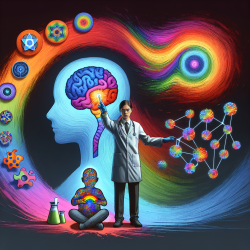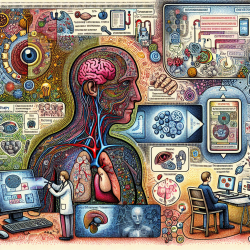Introduction
Autism Spectrum Disorders (ASDs) are complex neurodevelopmental conditions characterized by challenges in social interaction, communication, and repetitive behaviors. Recent research has shed light on the role of prenatal neurogenesis in the development of ASDs, offering new avenues for practitioners to enhance their skills and improve therapeutic outcomes. This blog explores the findings from the research article "Prenatal Neurogenesis in Autism Spectrum Disorders" and provides actionable insights for practitioners working with individuals on the autism spectrum.
Understanding Prenatal Neurogenesis in ASDs
The research highlights that abnormal cerebral growth trajectories are evident in a subset of children with ASDs. This is attributed to excess neuronal production during prenatal development, particularly in the prefrontal cortex. The study suggests that this overproduction of neurons is linked to altered proliferation of neural progenitors, which are crucial for the correct layering of cortical projection neurons.
These findings emphasize the importance of understanding the early embryonic origins of ASDs. Practitioners can leverage this knowledge to focus on early diagnosis and intervention strategies that target the root causes of cerebral enlargement in autism.
Implications for Practitioners
Practitioners can enhance their skills by incorporating the following strategies based on the research findings:
- Early Diagnosis: Utilize advanced imaging techniques and genetic testing to identify abnormal brain growth patterns in infants. Early detection allows for timely intervention, which can mitigate the progression of ASD symptoms.
- Preventive Strategies: Educate expectant mothers on environmental risk factors, such as maternal inflammation, that may influence prenatal brain development. Encourage healthy lifestyle choices and prenatal care to reduce the risk of ASD-related neurogenesis abnormalities.
- Therapeutic Interventions: Develop targeted therapies that address the specific neural progenitor proliferation issues identified in the research. This could involve personalized treatment plans that focus on enhancing neural connectivity and reducing excessive neuronal growth.
- Further Research: Encourage practitioners to stay informed about ongoing research in prenatal neurogenesis and ASDs. Participating in webinars, conferences, and reading relevant publications can provide valuable insights into emerging therapeutic approaches.
Encouraging Further Research
The research underscores the complexity of ASDs and the need for continued investigation into the genetic and environmental factors influencing prenatal neurogenesis. Practitioners are encouraged to collaborate with researchers to explore innovative diagnostic tools and treatment modalities that can be integrated into clinical practice.
By fostering a culture of research and collaboration, practitioners can contribute to the development of more effective interventions that improve the quality of life for individuals with ASDs.
Conclusion
The insights from the research on prenatal neurogenesis in ASDs provide a valuable framework for practitioners seeking to enhance their skills and improve therapeutic outcomes. By focusing on early diagnosis, preventive strategies, and targeted interventions, practitioners can make a significant impact on the lives of individuals with autism.
To read the original research paper, please follow this link: Prenatal Neurogenesis in Autism Spectrum Disorders.










